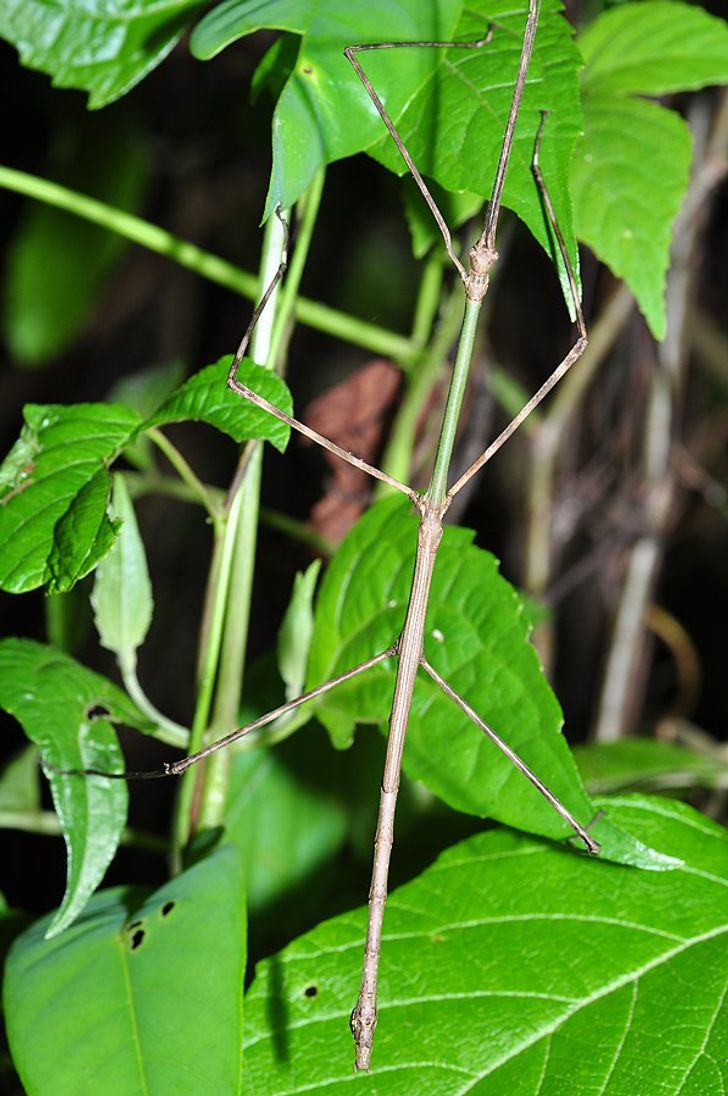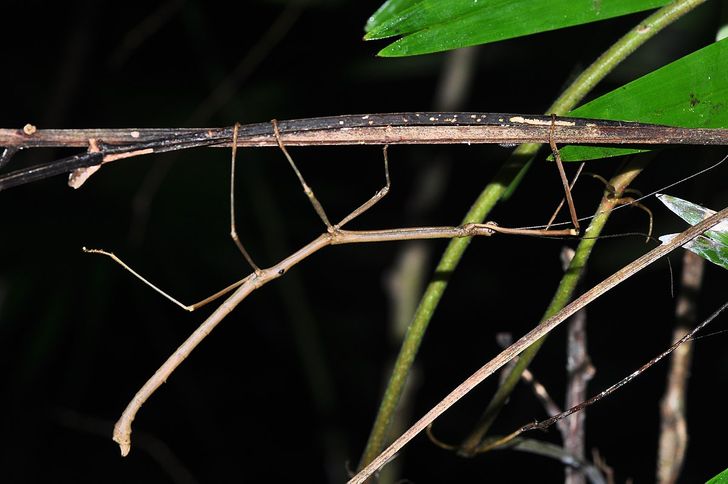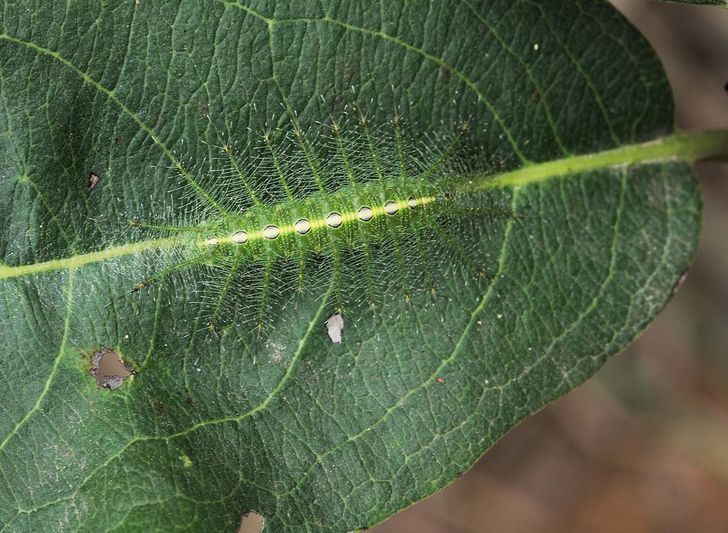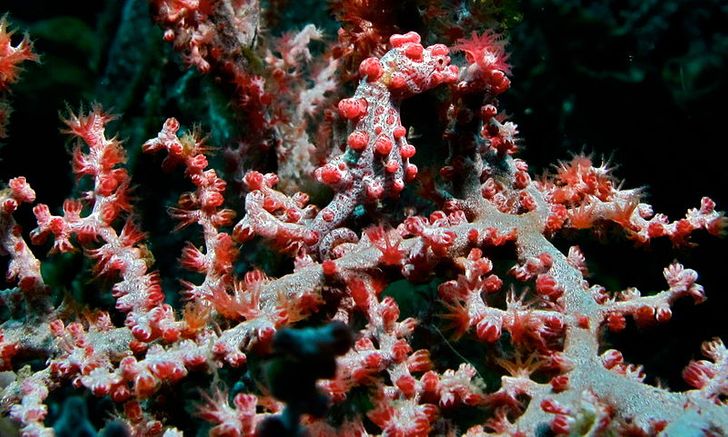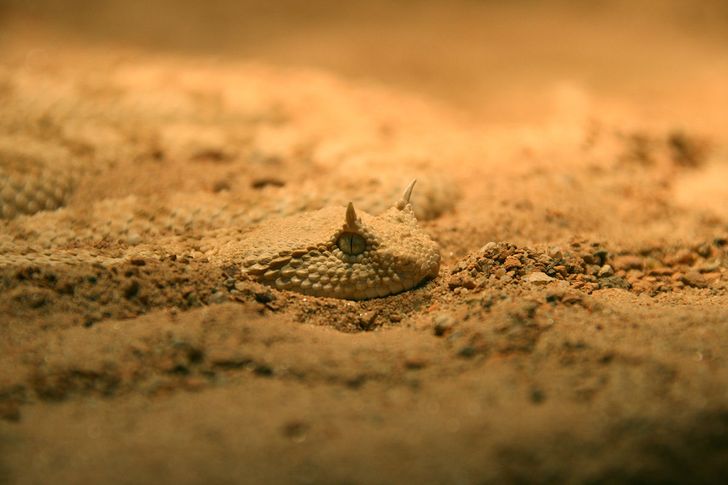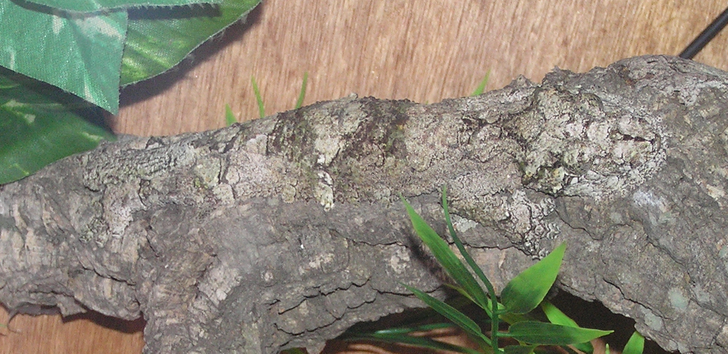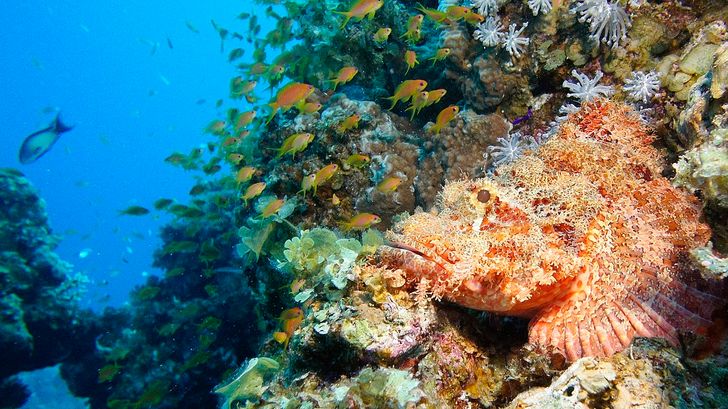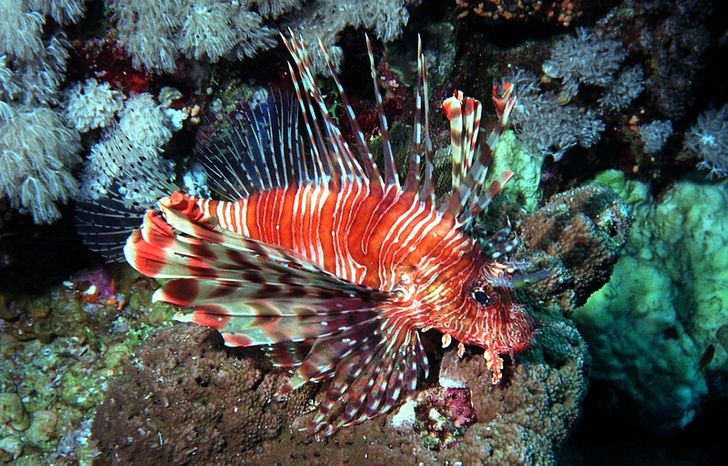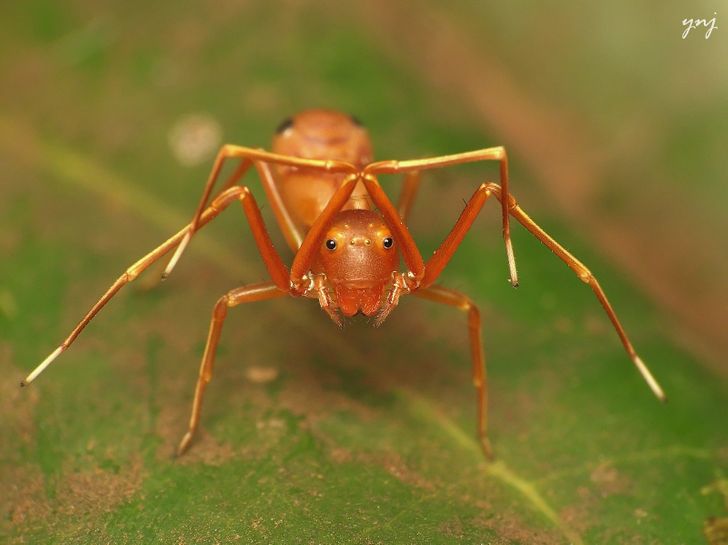Now I'm scared of leaves! Don't want to find The Common baron on one of them..
19 Animals That Can Change Their Look Like Wizards
Spiders that look like crabs, fish camouflaged to appear invisible, or even fish that can fly, are just some of the wonders of mother nature. Whether it’s escaping predators or courting a female, some animals have developed such extraordinary bodies and adaptations over time that they could make any plastic surgeon jealous.
We at Bright Side have asked Mother Nature to show us some of her most transformative animals and here is the result.
1. The Bird-of Paradise has a complex mating dance in which the male courts the female.
The bird-of-paradise belongs to the family Paradisaeidae. This family is best known for the gaudy plumage of the males. Most species have elaborate mating rituals, in particular the Paradisaea species uses a highly ritualized dance, as you can see in the photo.
2. The Chlamydosaurus deploys the large frill around its neck for fear, courtship, and intimidation.
Known as the frilled-necked lizard, this lizard is characterized by a crown of mobile skin around its neck. When the lizard is frightened, it opens its mouth, thus widening the crown of skin of the neck. This reaction is used for territorial issues, to discourage predators, and during courtship.
3. The Flower Crab spider changes color to resemble the flower’s surface where they sit.
Spiders called flower crab spiders can change their color. Their name also refers to their uncanny resemblance to crabs in the way these spiders hold their 2 front pairs of legs, and their ability to walk sideways or backward. They usually change color to resemble the flower surface on which they sit in order to hide from their prey.
4. The Stick insect replicates the look of sticks and leaves to disguise itself better.
The Phasmatodea are more commonly known as stick insects. They use mimicry as a defense mechanism, replicating the appearance of sticks and leaves. Their immobility and their ability to change color with their surrounding environment represent a bonus that helps them to better blend into their surrounding environment.
5. The Orchid mantis is characterized by a structure adapted for camouflage, mimicking parts of the orchid flower.
Known as the flower mantis and pink orchid mantis, this insect comes from the tropical forests of Southeast Asia. The orchid mantis is characterized by its bright color and a mimetic structure that simulates parts of the orchid flower. Its 4 walking legs look like flower petals.
6. The Common baron (caterpillar) evolved its shape to avoid predators.
A native of Sri Lanka, India, and Southeast Asia, the common baron is a butterfly. A single Baron caterpillar hatches from underneath a leaf, as this is the specialized area where a female Baron lays its egg. Baron caterpillars evolved their shape to avoid predators. This improves their odds of surviving, becoming a butterfly, and reproducing.
7. The Pygmy seahorse changes its skin color to camouflage, frighten predators, communicate their emotions, and for courtship.
Seahorses are marine animals that are able to change color. There are many reasons for wanting to change skin color: disguise, to frighten predators, to communicate their emotions, and courtship. It’s very difficult to distinguish seahorses from sea algae, soft corals, or sea fans where they usually live.
8. The Horned desert viper can burrow quickly into the sand, and its color helps it camouflage itself to hunt for prey.
The horned desert viper can burrow quickly into the sand by making rapid sideways movements with its body, leaving only its head and eyes visible. The color of the snake helps to camouflage it against sand or rocky ground, especially when it is partially buried.
9. The Chotacabras pauraque have mysterious appearance that helps them blend perfectly into their habitat.
Because of their strange appearance, these birds blend perfectly into their habitat and are very difficult to detect during the day when they are usually hidden while sleeping. The Pauraque benefits from its camouflage plumage that blends well with the color of the undergrowth and disappears, flatting against the ground as much as possible.
10. The Spiny Leaf Insect adopts a curved pose when it hangs inverted in foliage, and it can change its color.
The leaf insect uses passive and active mimicry, adopting a curved pose while hanging upside down in foliage. It can vary in color and be brown, green, cream, yellowish, reddish, or completely white. Like stick insects, it actively sways back and forth or sideways when it is disturbed or when there is a gust of wind, this is done to look like it’s one of the leaves, rustling in the wind.
11. The Uroplatus gecko has developed a flap of skin that makes them practically invisible.
All species of geckos have highly developed mimetic coloring. Most are brown-gray, black, or greenish brown with skin that resembles tree bark. We have 2 variants through which these geckos are camouflaged: the leaf shape and the bark shape. Some have developed a flap of skin along their body, known as a “dermal flap.” When they lie down against the trees during the day, it casts shadows and makes their outline practically invisible.
12. The Stone fish simulates the color of coral and surrounding stones to camouflage itself.
The Stonefish is part of the Synanceiidae family. It is dangerously poisonous and even deadly for humans. The name of the species, the stone fish, derives from its gray and mottled camouflage similar to the color of a stone. Swimmers may not notice them and inadvertently step on them, thus coming to a deadly end.
13. The Malayan horned frog can disguise itself among the foliage thanks to its brown color and its particular morphology.
The long-nosed horned frog, also known as the Malayan horned frog or Malayan leaf frog, is a species of frog restricted to the rainforest areas of South East Asia. They are light to dark brown on their dorsal surface with varying patterns and camouflage very well with the forest floor.
14. Flying fish have special lateral extensions that allow them to glide over the water.
Numerous morphological characteristics give the flying fish its ability to glide over the surface of the ocean. Its rigid body gives the flying fish aerodynamic advantages, increasing its speed, and improving its performance. The fish is able to increase its time spent flying by staying straight or taking advantage of the updrafts, created by a combination of aerial and oceanic currents.
15. The bird dropping spider mimics bird droppings to avoid predators.
Celaenia excavata, the bird dropping spider, derives its name from mimicking bird droppings to avoid predators which are comprised of mainly birds. They can be found in Australia, usually along the eastern and southern coasts.
16. Scorpion fish use their bright colors to blend into the reef and catch their prey.
Scorpaenidae (also known as scorpion fish) are a family of mostly marine fish that include many of the world’s most venomous species. These animals have bright colors that help them blend into the reef.
17. The Arctic Fox can change its white coat to brown.
In winter, Arctic foxes have beautiful white coats, which allow them to blend in with the snow of the Arctic tundra. This allows arctic foxes to effectively capture prey such as hares and fish. In summer their color changes to brown. This change provides an excellent camouflage against the rocks of the Arctic tundra during that season.
18. The Golden tortoise beetle changes color as an optical illusion.
The golden tortoise beetle is an insect that can change color. They change color due to particular events like meeting a mate and being touched by a human being. When mating or shaking, tortoise beetles change their color from gold to a bright red. The color change occurs due to an optical illusion.
19. The Myrmarachne imitate an ant by waving their front legs in the air to simulate antennae.
Myrmarachne are usually found in the tropics from Africa to Australia, with some species found in the New World. Myrmarachne are jumping spiders that imitate ants by putting their front legs in the air to simulate antennae. Some species also look very much like ants.
Did you already know about any of these animals? Which of them do you find most extraordinary? Are there other animals that you think should be added here? We look forward to hearing your opinions in the comments!
Comments
in Australia there are wrap-around spiders that can look like a tree branch!
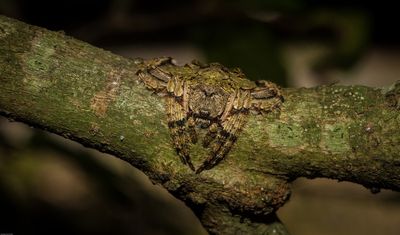
What's the Latin name?
Dolophones conifera ?
Related Reads
My Teenage Daughter is Shaking My Confidence as a Woman— I Decided to Send Her to Boarding School

10+ People Who Experienced a Real-Life Horror Movie

15+ Stories That Prove Moms’ Love Tank Never Runs Empty

I Refused to Adopt My Husband’s Niece — Now He Says I’m Heartless

I Discovered My Husband Was Cheating on Me, but Karma Got Him

16 Stories From People Who Had a Funny Experience With a Rich Person

10 People Who Checked Into a Hotel and Immediately Wanted to Check Out

20 Family Members Who Turned Out to Be Wolves in Sheep's Clothing

14 Things People Do That Make Hotel Staff Say, “You Can’t Be Serious...”

My Wife Humiliated Me in Front of My Boss, I Can't Forgive Her

10 Stories Where Reality Turned Out to Be More Entertaining Than Any Sitcom

I Escaped Our Family Trip After My Son Issued a Humiliating Ultimatum

